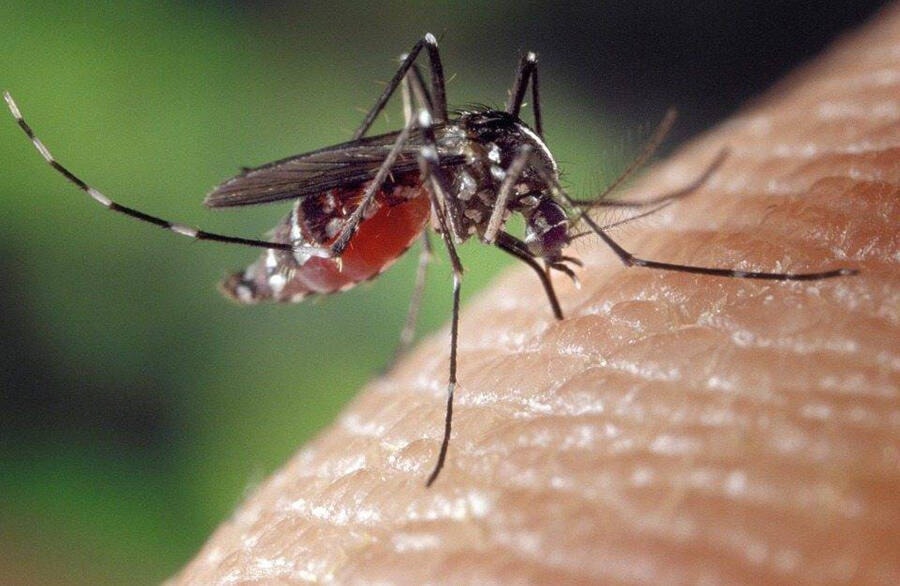Sicamous is itching to get a recent surge in mosquitoes under control.
At the June 14 committee of the whole meeting, Cheryl Phippen addressed council on behalf of BWP Consulting Inc., the company contracted to control the mosquito population in Sicamous and elsewhere in the Shuswap.
The presentation began with a lesson on tackling common questions both BWP and the district receive.
Phippen said so far in Sicamous her teams have identified 25 species of mosquito, with 42 species living in the surrounding areas. There are specific species that interact with humans and some that don���߲��о����t, she said, noting when she receives phone calls in early March about mosquitoes, it���߲��о����s usually regarding large species that prefer to feast on big animals like horses. Phippen explained while they may show up heavily in spring, this isn���߲��о����t an indicator of the kind of year residents will experience.
Species that likes to lay eggs in floodwater is the biggest problem in Sicamous, Phippen confirmed. The Aedes variety lays eggs in water from rivers and when the river rises, many eggs get wet at once and develop quickly, especially in hot weather, said Phippen. These quick-developing insects are usually aggressive.
The freshwater species typically emerge, bite once, lay eggs and die, assured Phippen, so they are rarely at fault for carrying diseases like West Nile Virus.
Most species that act like that prefer feeding on birds and normally have low numbers in this area, Phippen said, attempting to calm some residents���߲��о���� fears.
The company���߲��о����s mosquito program works to identify and monitor habitats, lake levels and weather (which impacts both egg numbers and treatment). They keep a tally on larval counts and treat areas by hand and helicopter.
There are about 250 potential habitats identified from Shuswap Lake to the Cambie-Solsqua bridge area. A typical ���߲��о����dip count���߲��о���� in the area yields anywhere from 200 to 1,500 larvae in 300 millilitres, said Phippen.
Also calming fears about mosquito repellent, Phippen said BWP uses the same biological agents all provincial programs do, a larvicide that uses common soil bacteria bacillus thuringiensis (Bti) as the active ingredient. The bacteria produces a protein crystal that, when eaten by mosquito larvae, dissolves in their high pH-level gut and binds to specific receptors, killing them. She confirmed this process is specific to mosquito larvae and doesn���߲��о����t harm other animals or natural systems.
Health Canada���߲��о����s statement on bacillus thuringiensis reads: ���߲��о����The risks posed by Bti strains to non-target organisms [are] minimal to non-existent. The insecticidal toxin biodegrades quickly in the environment through exposure to sunlight and micro-organisms.���߲��о����
���߲��о����After 24 to 48 hours, whatever we���߲��о����ve applied is no longer working, as more eggs keep hatching, though, that does mean we���߲��о����re back at square one,���߲��о���� said Phippen.
In 2023, BWP began monitoring and treatment on May 3, dispensing two helicopter applications on May 26 and June 6, over approximately 200 and 240 hectares respectively. Phippen said no data has been entered since June 6, but up to that date, there are about 250 records in the database and around 2,740 kilograms of larvicide had been applied.
Eagle River data showed a peak on May 6, nearly three weeks earlier than average. Shuswap Lake peaked on May 30 ���߲��о���� the average is around June 17.
Overall, Phippen said teams are finding treed areas are most populated and are bringing up very few larvae in dip counts currently, only one to five larvae per cup. She said hot weather needs to return to kill off the remaining adult mosquitoes.
BWP gets a budget for a certain amount of hours every year, Phippen explained, which is usually enough for two full-time and two half-time employees. They get 15 hours of helicopter time budgeted and are paid mileage for other vehicles. Larvicide is provided by the district.
���߲��о����We get the same pay for a busy year and a slow one,���߲��о���� she said, noting some weeks can see seven-day work weeks with long hours and as the summer goes on, it gets slower. She added 2012 was an especially bad year and council at that time mandated how many hours get allotted for mosquito control, and her teams respond to the weather and community needs.
In response to the current surge, she said this year has been challenging for staff. Sometimes areas are affected by seepage, with water pooling in areas it normally doesn���߲��о����t and puddles forming where teams don���߲��о����t know to continually check, like under bushes.
Homeowners can get standing water on their property treated by contacting the district through its .
READ MORE:
READ MORE:
rebecca.willson@saobserver.net
Like us on and follow us on and subscribe to our daily .



